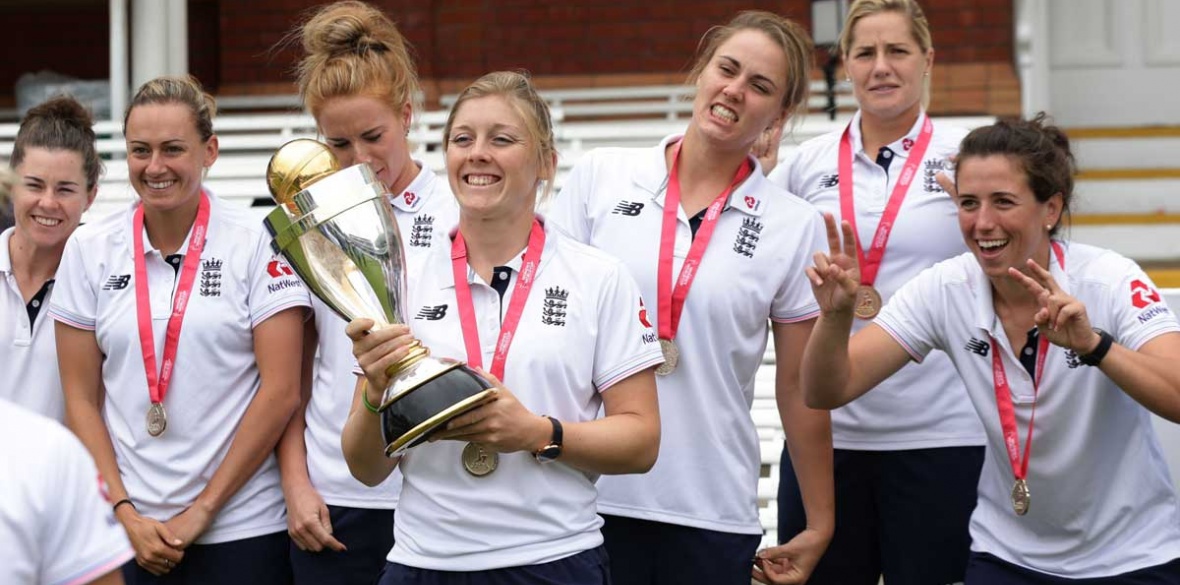This is the last article you can read this month
You can read more article this month
You can read more articles this month
Sorry your limit is up for this month
Reset on:
Please help support the Morning Star by subscribing here
THE call of spring makes demands on the cricket follower to reflect on the state of this greatest of sports, but also to express concern for its future direction and reminisce on past glories.
Covering such a mixture and more, the annual publication of Wisden provides an opportune sounding-board.
The theme of this year’s volume seems to be inclusion.
Three women are selected among the five Cricketers of the Year: Heather Knight, Anya Shrubsole and Nat Sciver.
Such prominence allows for a wider examination of gender, and the observation that there are few female umpires, camera operators, commentators or, for that matter, writers in Wisden.
Tanya Aldred notes, though, a “small but significant shift” in the use of language: we now have the Australian men’s team and Australian women’s team, rather than Australia and Australian women. Similar changes have affected England and the West Indies, While New Zealand’s men are the Black Caps and women the White Ferns.
Yet social and religious conservatism has prevented the development of the female game in Afghanistan, with players being threatened. In India, the former president of the Cricket Board, N Srinivasan, is quoted as having said: “If I had my way I wouldn’t let women’s cricket happen.”
The Indian Premier League (IPL) persists with young female cheerleaders, and Wisden continues to refer to batsmen rather than the gender-neutral batter. I made this point last year, and hope that it won’t still need saying in 10 years’ time. Some traditions, it seems, take longer to budge.
There is a clear acknowledgement of the predominance of Twenty20 cricket. The format’s ability to globalise the sport is evident in the selection of Afghanistan leg-spinner Rashid Khan as the first to be anointed as the leading T20 player. His 80 wickets in the calendar year was 18 better than his nearest competitor.
Tim Wigmore writes that the teenager embodies the democratisation of cricket, where franchise or club eclipses nation.
This structural adjustment is an influencing factor in the proposed English T20 (or 100 balls) tournament to start in 2020. Eight to-be-named clubs, which may not even relate to place, will play an additional competition using the major grounds.
Tom Harrison of the England and Wales Cricket Board (ECB) argues that “we need to strip away the tag of privilege and elitism which the sport in this country still carries.” This can only come by attracting new fans to broaden cricket’s base. The return to free-to-air television, he argues, will drive participation.
Readers will have to question why it has taken the ECB so long to realise what many have been arguing for the last 10 or more years. George Dobell retorts that the ECB’s main priority has always been their bank account.
The Cricinfo journalist notes that a rebranded T20 tournament featuring all of the counties stands just as much chance of success, especially if it was broadcast on terrestrial television.
The new competition is set to run at the same time as a 50-overs tournament and Test matches, meaning that the counties will be deprived of 100-odd England-qualified players for the one format that England are any good at!
The message is clear: the ECB is prioritising one format above others and risks sacrificing “the long-term success of the Test and one-day sides in pursuit of the T20 dollar.”
Not that success and Test cricket fit easily in the same sentence at the moment. Coverage of the recent Ashes is so down-hearted that you fear for the longer format. The editor’s notes remind us that once a trashing by Australia would have raised questions in Parliament, whereas now it is expected. This implies the demise of cricket as part of the national debate.
This might have been one of the most viewed Ashes in history, but there is a sense that people came for reasons in addition to the cricket: for the floodlights in Adelaide, to say goodbye to the Waca, and the tradition of Melbourne.
But Test cricket is heavily reliant on the Anglo passion for it. On August 1, against India, England will play their 1,000th Test. In all, 43 per cent of all Tests have featured England.
That doesn’t mean we are any good at it! By the end of the New Zealand tour, English bowlers had taken 20 wickets just once in 12 Tests abroad.
Yet, the County Championship is being marginalised into the early and late parts of the season — April, May and September — where seeming pitches do little to encourage and develop fast bowlers or spinners, thus further reinforcing the weaknesses evident at the national level this winter.
As always, political events provide context to cricketing narratives, and you can read of suffragettes burning down the pavilion at The Nevill ground in Tunbridge Wells, part of a campaign against sporting institutions. Other historical settings include the 1971 India-Pakistan war, the Paris student riots of 1968 and the Soviet occupation of Afghanistan.
Geoff Lemon’s first thought on being asked to write about indigenous cricket in Australia was that someone from the Aboriginal community would be better suited, but on inquiry there was no cricket writer who publicly identifies as indigenous. What emerges is a shocking piece on explicit racism that not only dominates Australia’s legacy but has repercussions for the growth of the sport beyond the white population today.
Having toured with England in Bangladesh and India in the winter of 2016-17, Zafar Ansari quit cricket at the start of the 2017 season. He writes openly about his leftist leanings and how he struggled with certain ethical demands, notably the pressure to be permanently competitive. “I grew wary of a professional culture that treated the uncompromising pursuit of victory as essentially virtuous.”
Cricketers are subject to their social environment, yet this cannot be acknowledged, for a sport that promotes the ethos of individualism means that players have to take sole responsibility for their actions, lest they be considered weak.
Ansari writes as well as the New Statesman’s Ed Smith, now chief selector, and one hopes that in between studying law he could be enticed into the Test Match Special box and help redress the balance between intellectual and jester.
Writers of Ansari’s quality, the analysis and depth of Lemmon and debates about inclusion and the rise of T20 ensure that Wisden remains a relevant voice, while cricket remains an ever-relevant indicator of social life.
Enjoy the new season!









